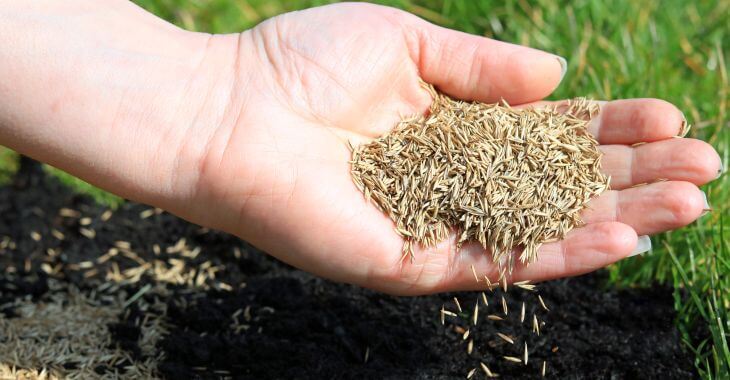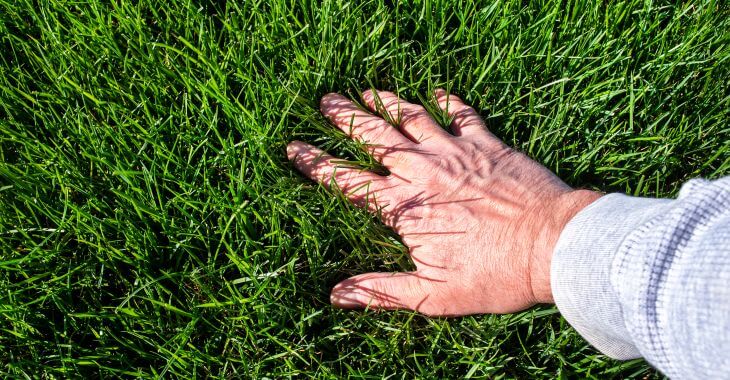How to Plant Grass Seed on Hard Dirt

Planting grass seed on hard dirt can be tricky, but it’s not impossible. With the right prep and care, you can turn even compacted soil into a healthy lawn. Whether you’re repairing bare spots or starting from scratch, knowing how to grow grass from dirt is the key to lasting results.
Why Grass Won’t Grow on Hard Dirt
Hard, compacted dirt prevents air, water, and nutrients from reaching grass seed. Even if you spread seed generously, it won’t take root well without proper soil preparation. This leads to thin, patchy grass or no growth at all. Fixing the problem starts before you plant.
Here are some steps and tips on how to plant grass seed on hard dirt to achieve healthy, thriving grass.
Step 1: Test and Water the Soil
Before planting, test the soil moisture. If it is extremely dry, water the area a few days before working the soil. This helps soften the dirt slightly, making it easier to break up later. You will need some flexibility in the soil to allow seed-to-soil contact.
Step 2: Loosen and Aerate the Ground
The next critical step in learning how to plant grass seed on hard dirt is breaking up the compacted layer. Grass seed won’t penetrate or root in solid ground. Use one of the following tools to loosen the soil:
- Garden rake for small patches
- Manual aerator for moderate areas
- Rototiller for large lawns
- Aim for at least 2–3 inches of loosened topsoil.
Step 3: Remove Debris and Level
After aerating, clear out rocks, weeds, sticks, and other debris. Smooth and level the soil using a rake, so water and seed don’t pool or wash away unevenly.
A gentle slope for drainage is fine, but you want an even base overall.
Step 4: Add a Layer of Topsoil or Compost
Adding a thin layer (1–2 inches) of topsoil, compost, or lawn soil helps improve the structure and nutrition of your dirt. This also creates a better environment for grass seed to settle and germinate. Mix lightly with the loosened dirt.
Step 5: Choose the Right Grass Seed
Choosing the right type of grass is essential when learning how to grow grass from dirt. Select a seed blend suited for your climate and soil condition:
- Cool-season grasses: Fescue, Kentucky Bluegrass, Ryegrass
- Warm-season grasses: Bermuda, Zoysia, Bahia
- Use a high-quality seed for better results.
Step 6: Spread Grass Seed Evenly
Use a seed spreader or your hand to evenly distribute seed over the prepared soil. Be sure to follow the seeding rate instructions on the package. For better coverage:
- Spread half the seed north-south
- Spread the other half east-west
- This ensures no patchy areas.
Step 7: Rake and Press Seed into Soil
Lightly rake the seeded area to mix the seed into the top ¼ inch of soil. Then press the seed into the ground using a lawn roller or by walking gently across the area. This improves seed-to-soil contact, which is critical for germination.
Step 8: Water Gently and Regularly
Water the area lightly but consistently. Keep the top layer of soil moist at all times. Avoid heavy watering, which can displace seed or cause runoff. For the first 2–3 weeks:
- Water 2–3 times per day
- Use a light spray or mist
Reduce frequency once the grass begins to grow.
Step 9: Fertilize After Germination
Once you see sprouts (usually after 7–14 days), apply a starter fertilizer to give the new grass nutrients for strong roots. Choose a fertilizer high in phosphorus, which helps root development. Do not overdo it—follow the package directions closely.
Step 10: Mow Only When Ready
Wait until your new grass reaches 3–4 inches tall before mowing for the first time. Use a sharp mower blade and only cut ⅓ of the blade height to avoid shocking the grass. Be patient. Early mowing can pull up new roots and undo all your hard work.
Maintenance Tips for Long-Term Success
Now that you know how to grow grass from dirt, here are tips on how to keep your lawn looking healthy:
- Aerate yearly to prevent future compaction
- Water deeply, but less frequently, after establishment
- Fertilize seasonally based on your grass type
- Keep mower blades sharp to avoid grass damage
Hard Dirt Doesn’t Mean Hopeless
With preparation, patience, and care, even the hardest dirt can grow lush, green grass. The secret lies in soil prep, quality seed, and consistent watering. Knowing how to plant grass seed on hard dirt gives you the tools to revive bare or compacted areas and enjoy a vibrant, resilient lawn.

If you try these steps and still are not successful growing grass on hard dirt, contact your local landscaper. They can offer professional assistance in growing your lawn, even on compacted soil.
